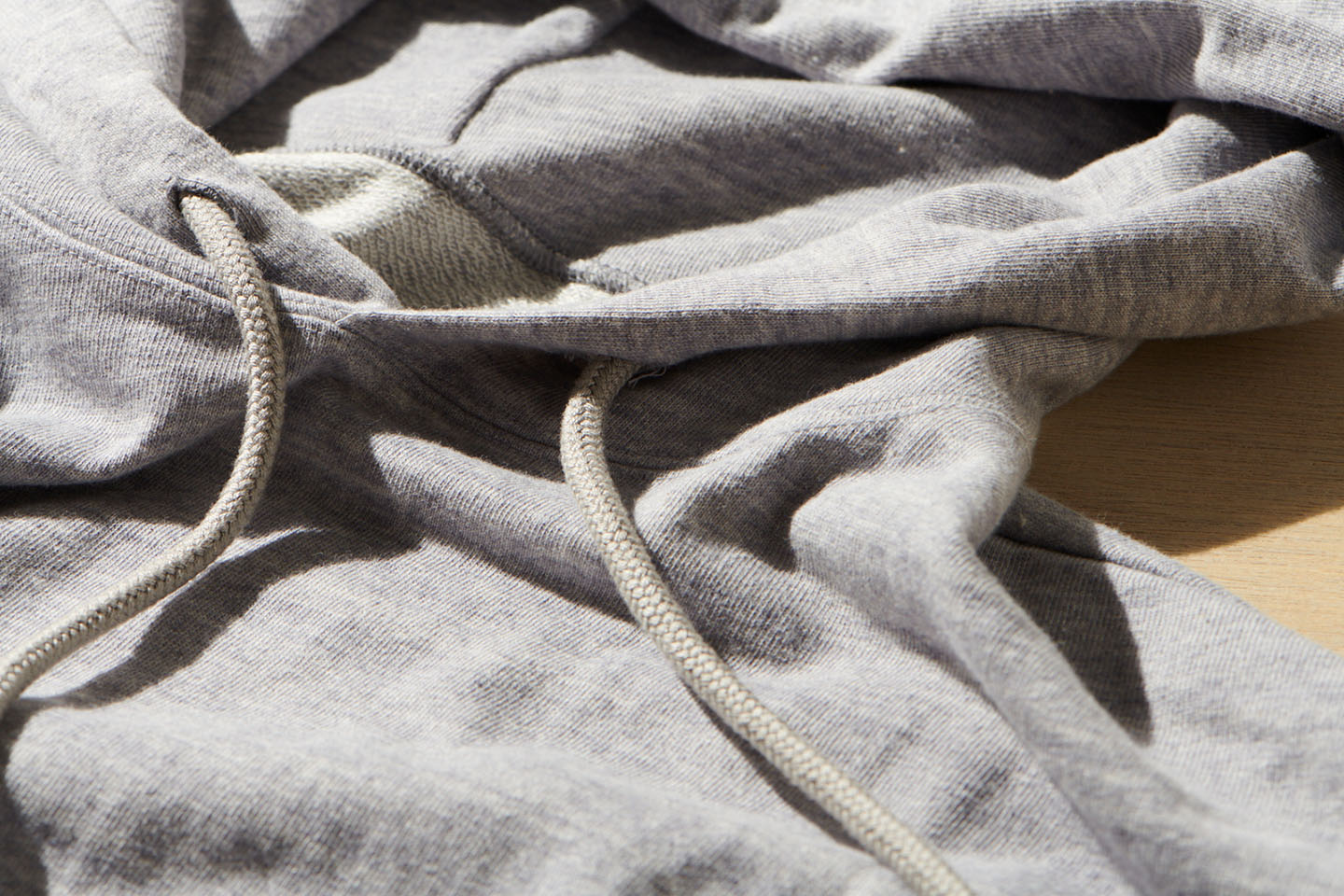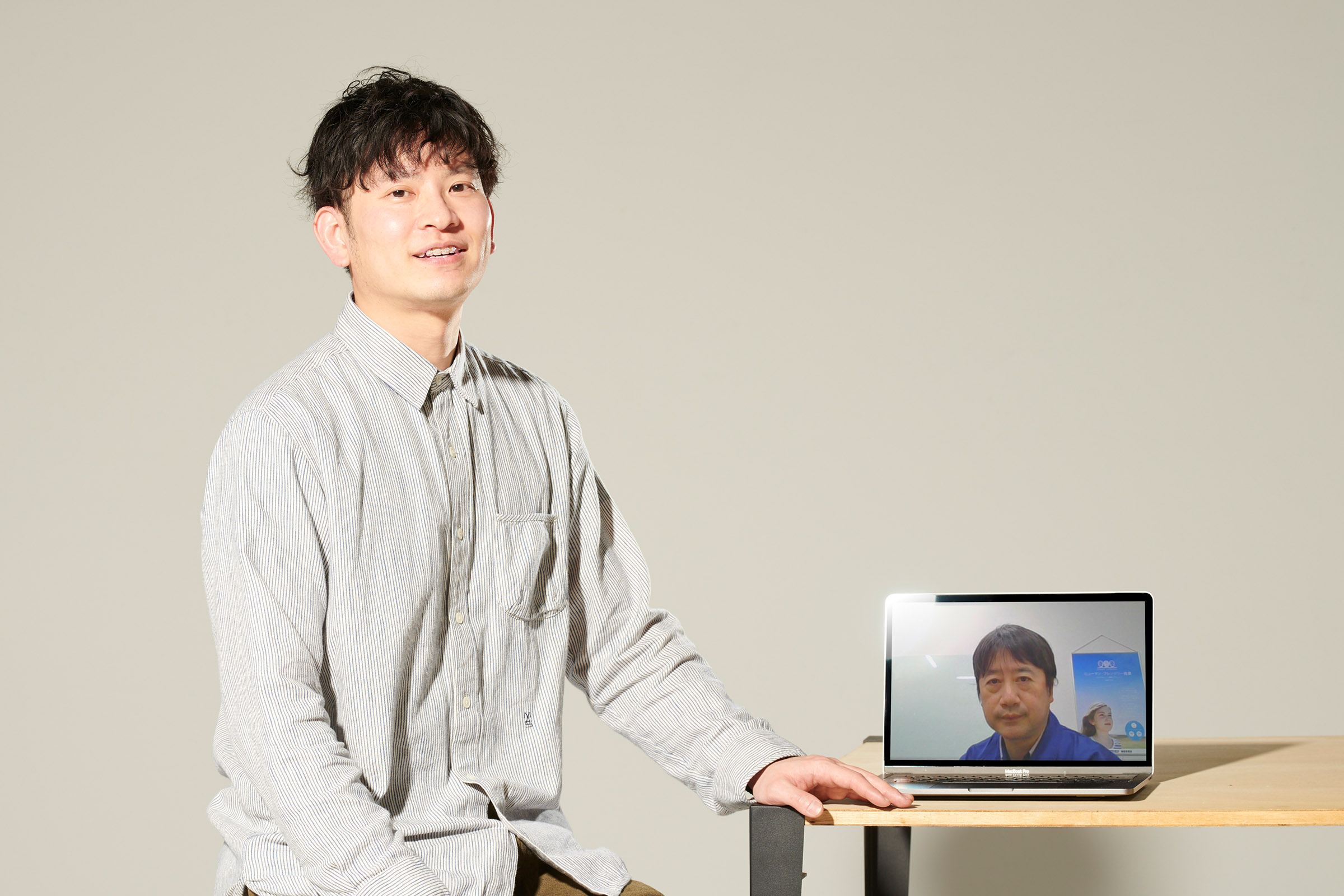従来のファッション・繊維業界が抱える
大量消費の仕組みに一石を投じ、
サステナブルファッションのあり方を変えようしている、L∞PLUS。
このプロジェクトが生まれた背景には、
どんな思いと展望があったのでしょうか。
開発に携わっている、クラボウ繊維事業部で
L∞PLUSの企画・デザイン担当の肥田さん、
技術開発担当の山内さんにお話を伺いました。
How to change the world through clothing choices
What was the idea and vision behind the creation of this project? We spoke with Mr. Hida, who is in charge of planning and designing for L∞PLUS in the Kurabo Textile Division, and Mr. Yamauchi, who is in charge of technology development, about the development of this project.
―L∞PLUSをはじめたきっかけを教えてください。
―Tell us about the original motive for starting L∞PLUS.
肥田:クラボウ繊維事業部では「人」「社会」「地球」の視点でモノづくりを行う基本姿勢「ヒューマン・フレンドリー発想」を1993年から推進しており、今の社会の流れよりもいち早くサステナブルな取り組みを実践してきました。具体的な契機は、服を作る工程で出る「裁断片」を何かに再利用出来ないか、と考え始めたこと。エシカルやSDGsが叫ばれる時代の中で「服を生むと捨てる物も大量に生んでしまう」という矛盾を、どうにしかして変えたかったんです。そんな時に再生生地の製品化に前向きなお客様との出会いもあって、一歩踏み出すことができました。
Hida: Kurabo's Textile Division has been promoting the "Human Friendly Concept" since 1993, which is the basic stance of manufacturing from the perspective of "people," "society," and "the earth," and has been practicing ethical approaches earlier than the current social trends. The specific impetus for this was when we began to think of ways to reuse the "cutting waste" that are produced during the cutting fabric process of making clothes. I wanted to somehow change the contradiction that, in an age where people are talking about sustainability and the SDGs, creating clothes still creates a lot of waste. It was around then that I met a customer who was willing to commercialize recycled clothing, and I was able to take the first step.
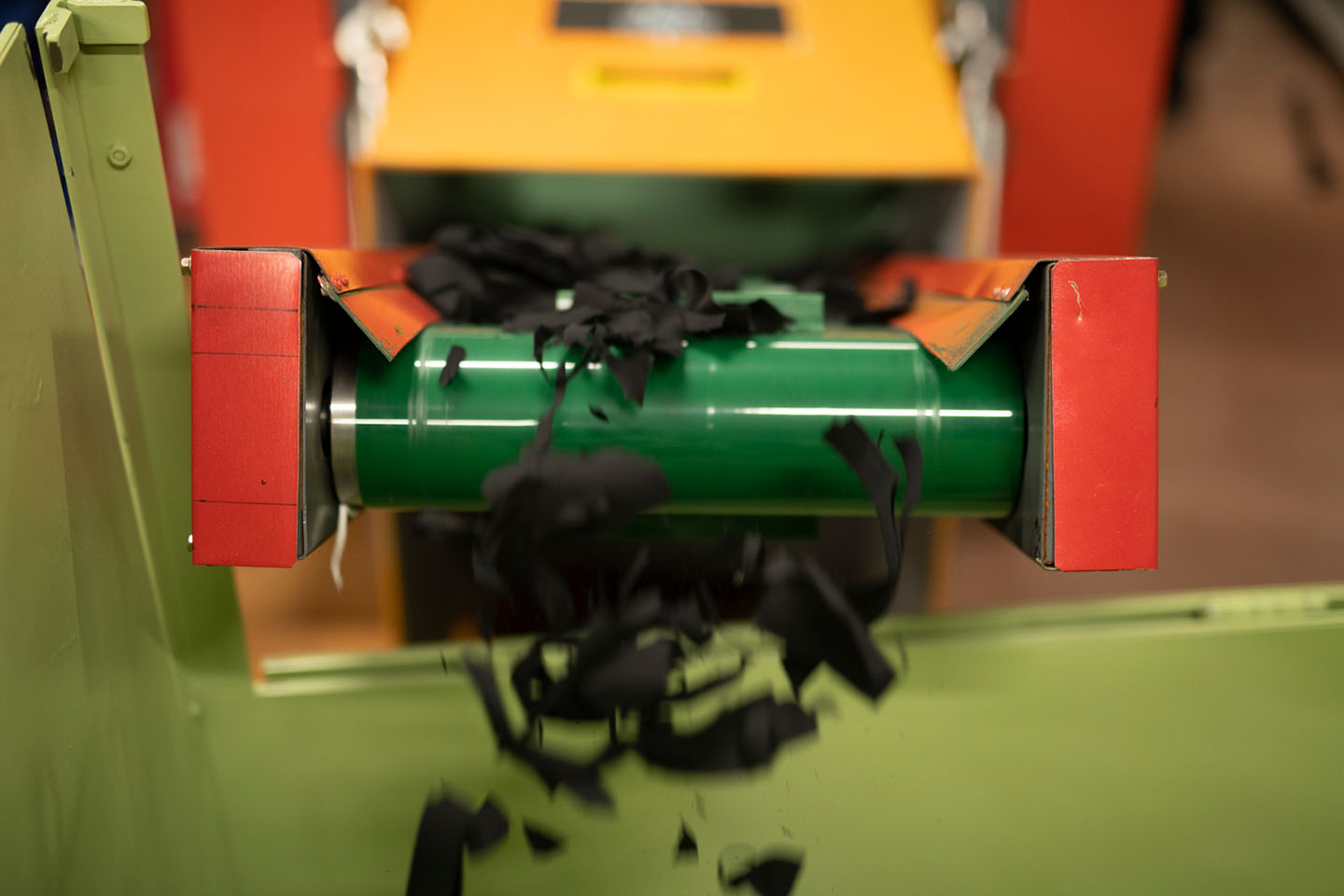
山内:もともと、使えないくずものを軍手や雑巾などへリサイクルする仕組みは日本にもありますし、海外でも売り物にならない衣類を引き取る業者さんがいたりと、再利用されることはありました。
ポイントは、裁断片に目をつけた点です。裁断片は、これまではフェルトにして車の内装材にするなど、見えない部分に使われてきた程度で、多くが大量に廃棄されてきました。L∞PLUSは、その裁断片をきっちり色分け、製品区分をすることで物としてアップサイクルさせよう、というアプローチなのです。特に反毛綿からのアパレル製品への再生は技術的難易度が高く、これを実現できたのはクラボウの繊細な商品管理と、これまで培ってきた100年以上の歴史があってこそだと思っています。
Yamauchi: Originally, there was a system in Japan to recycle unusable scraps into military gloves, floorcloths, duster, etc., and even overseas, there are companies that take in clothing that cannot be sold and reused. The point is that we focused on cutting wastes. In the past, cutting wastes were only used for invisible purposes, such as making felt for car interiors, and many of them were discarded in large quantities. L∞PLUS is an approach to upcycling cutting wastes by categorizing them into different colors and products. I believe that Kurabo's delicate product management and more than 100 years of history have made it possible to realize this project.
―裁断片はどのようなプロセスで再製品化されるのでしょうか。
Can you tell us about the process used for recycling the cutting wastes?
肥田:簡単に説明しますと、まず色ごとに裁断片を分別し、専用の設備で衣類に使う生地の原料となるふわふわとしたワタ状へと戻していきます(反毛)。それらを集め、紡績工程を経て糸にし、生地に再生する、という形です。その後、Tシャツやスウェットの素材になるような「編み物」の編立工程や、パンツやジャケットなどで使われる、縦糸と横糸で構成される「織物」の織布工程は、日本国内だけでなく海外でも行っています。
Hida: To explain briefly, first, we separate the cutting wastes by color and use a special facility to turn them back into soft cotton, which is the raw material for the fabric used in clothing (Fiber opening and tearing). These are then collected and turned into yarn through the spinning process, which is then recycled into fabric. After that, the knitting process for knitted fabrics, which are used to make T-shirts and sweatshirts, and the weaving process for woven fabrics, which consist of warp and weft yarns and are used for pants and jackets, are carried out both in Japan and overseas.
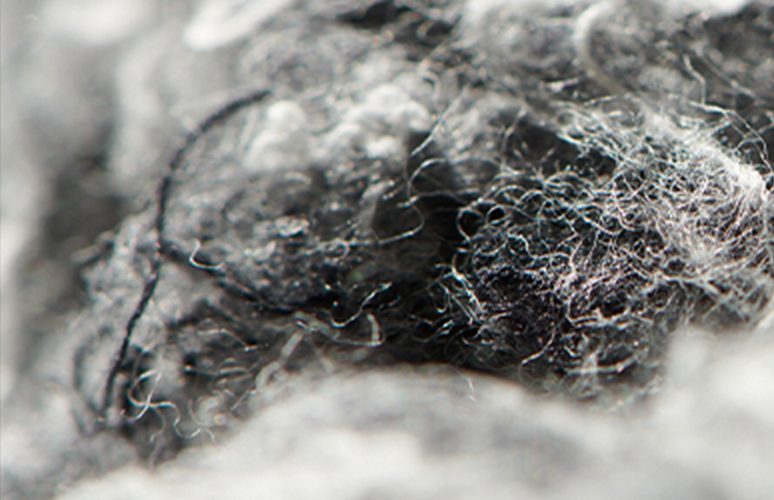
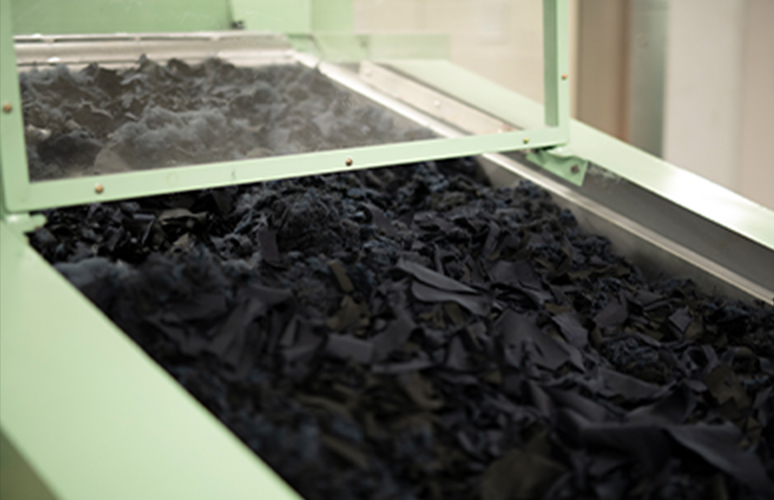
山内:一般的に手に入る衣料品に使われている糸は、ある程度長さのある繊維を使っていて、それらから出る裁断片をワタ状にしたものを糸にすると、繊維はどんどん短くなっていきます。短い繊維が多くなると製品に使える糸の強度にならなかったり、生地がボコボコしたりして着心地が悪くなるんです。そのため、プロセスの中で短い繊維をいかにして取り除くかが技術的課題でした。短い繊維を取り除く試験は、おそらく100回以上行ったと思います。また、L∞PLUSではさまざまな色を扱うので、工場内に試験ラインと生産ラインを別に組み、他製品ときっちり区分した形を作りました。色付きの繊維が風で舞って他のラインに行かないよう、工場の中の空調にも工夫を凝らしています。
Yamauchi: The yarn used in commonly available clothing is made from fibers of a certain length, and when the cutting wastes from these fibers are made into cotton and then into yarn, the fibers become shorter and shorter. If there are too many short fibers, the yarn will not be strong enough to be used in products, and the fabric will become bumpy and uncomfortable to wear. Therefore, the technical challenge was how to remove the short fibers in the process. We probably conducted more than 100 tests to remove the short fibers. Also, as L∞PLUS comes in a variety of colors, we had to set up an independent L∞PLUS test line and production line in the factory to keep it separate from other products. We also devised an air conditioning system in the factory to prevent the colored fibers from being blown around by the wind and going to other lines.
―そのようにして生まれたL∞PLUSの長所や特徴を教えてください。
Can you tell us about the features and advantages of L∞PLUS?
肥田:ひとつは、裁断片を再生することで生まれる、杢調の柔らかく優しい風合いです。裁断片はその時々でさまざまな色が集まるので、色味のコントロールが難しい。そこで、L∞PLUSではあえて色を完全には管理せず、色がどう転ぶかを偶然性にゆだねています。紺色は紺色でも、毎回微妙に異なる。その一回性の色合いは再生素材の特性でもあり、ひいてはユーザーが選ぶ楽しみにもつながると捉えていて、ある程度の色のバラつきを前向きに考えていただけるお客様とのお取引を進めています。L∞PLUSの独特の風合いや色の出方が新しいサステナブルファッションの一つの方向性になるのではと考えています。
Hida: One is the soft and gentle texture that is created by recycled cotton after tearing the cutting wastes. It’s difficult to control the color of the cutting wastes because they come in a variety of colors at different times. Therefore, at L∞PLUS, we dared not completely control the colors, but leave the result to chance. Dark blue is dark blue, but it is slightly different every time. We believe that this one-time coloration is a characteristic of recycled materials, which consumers enjoy, and we work with customers who are open to a certain degree of color variation. We believe that the unique texture and color of L∞PLUS will become one of the key components of new ethical fashion.
山内:こと色味に関しては「限られた色数から新しい色を生み出そう」という姿勢で日々新たな色味の開発も行っています。黄色と青を混ぜて新しい色を作ったり、色付きの反毛綿の紡績方法を改善・開発して新たな独特のメランジ感をつくり出したり、2本の糸を撚り合わせたりなど、実験の繰り返しですね。
Yamauchi: When it comes to color, we try to create new colors from a limited number of base colors, and we are constantly developing new ones. For example, we mix yellow and blue to create a new color, improve and develop the spinning method of colored recycled cotton to create a new and unique mixed texture, and twist two yarns together.
肥田:こうした開発姿勢を通じて、ゆくゆくは「サステナブルファッション」という手垢のついた言葉のイメージをアップデートしたいですね。L∞PLUSを着ることが、自然と社会問題の解決への参加につながっている。それが、何よりの付加価値だと思います。
Hida: Through this kind of development approach, I would like to eventually update the tarnished motto of "ethical fashion" itself. Wearing L∞PLUS naturally leads to participation in solving social problems. I think that is the best added value.
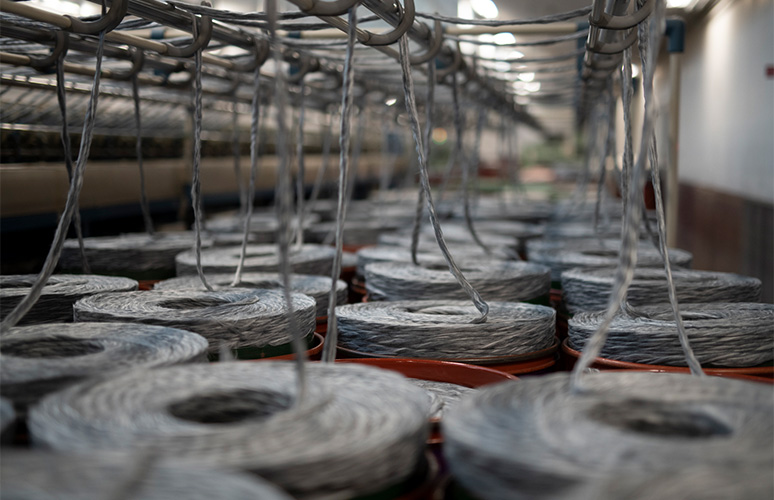
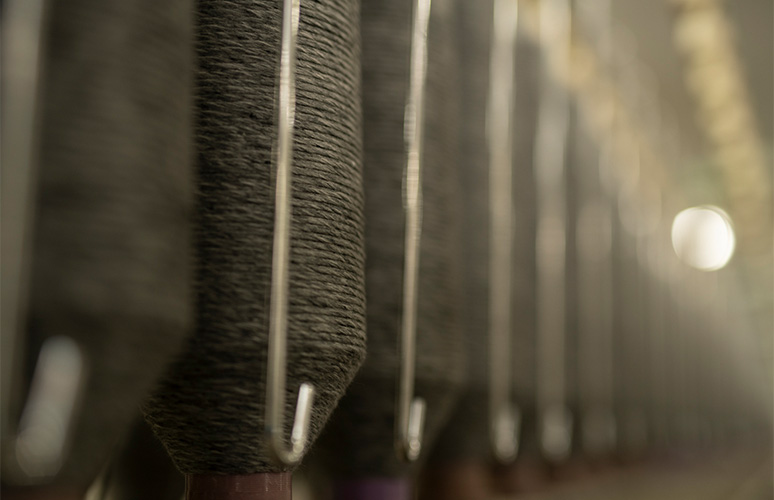
―L∞PLUSが持つビジョンや今後の展望を教えてください。
Tell us about the vision you have for L∞PLUS and what you see for the future.
肥田:L∞PLUSが、社会そのものをアップサイクルさせる一つの入り口になってほしいなと思っています。今まで捨てられてきた素材が服になり、また商品になるというアップサイクルの仕組みが完成したら、それはまさしく「着ることで世界を変えられる」ということなんじゃないか、と。 もちろん、これはクラボウ単体で取り組んでも達成できません。ブランドや流通業者、小売業者やユーザーなど、服に関わる全ての人たちが環境配慮への意識をもって参加してもらうことで、初めて達成できることだと思っています。そういう意味では、L∞PLUSは単なる素材ではなく、クラボウがみなさんと一緒に作り出す、壮大な参加型プロジェクトだとも言えるかもしれません。L∞PLUSを通じて、持続可能な世界に貢献していくことが、これからの“カッコよさ”なんだと伝えていきたいですね。
Hida: I hope that L∞PLUS becomes a gateway to upcycling society itself. If we can create an upcycling system where materials that used to be thrown away can be turned into clothes and then into products again, it would mean that we can change the world by wearing clothes. Of course, this cannot be achieved by Kurabo alone. I believe that this can only be achieved if everyone involved in the clothing industry, including brands, distributors, retailers, and consumers, participate with an awareness of environmental issues. In that sense, L∞PLUS is not just a material, but a grand participatory project that Kurabo has created together with you. L∞PLUS is a way to show that contributing to a sustainable world is the future of "coolness.”
